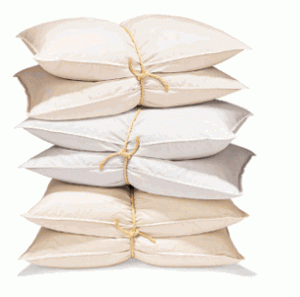Is your pillow causing acne?

Be honest – how often do you change the sheets on your bed? If you can’t remember the last time you did, it’s been far too long.
Think about the things that frequent your pillowcase: shreds of hair, skin, dandruff, dead skin cells, micro-allergens, oil and bacteria. All of these things are soaked up into your pillow nightly, and then spread over your face over the course of roughly eight hours. If you wash your face right before bed (as you should!) you then hit the sack while your pores are open, making them more susceptible to receiving the bacteria by the pressure applied to your face when lying on your pillow.
In addition to all of that, your face naturally secretes oils during the night, and these oils are typically sticky. Plus, there is the bacteria from our eyes, nose, and mouth that also cover our pillowcases at one point or another. As you are off in dream land, your face is clogging up with toxins, causing outbreaks and irritation.
Not changing your pillowcase frequently is kind of like taking a dirty wash cloth and wiping it across your face for hours at a time. Changing to a new one can help reduce the spreading of bacteria.
Knowing how frequently to change your linens depends on the individual. You should take several factors into consideration: do you have dry, normal, or oily hair/skin, and do you sweat a lot during the night? If you do not have an issue with oily conditions or sweating, changing your pillow case once a week should suffice. If you are more oily and sweat throughout the night, you might want to raise it to twice a week.
Investing in a pillow protector will further protect your skin, as they guard your pillow from dust, mites, allergens and bacteria.
All of this also applies to your wash cloth, make up brushes, and anything else that comes into contact with your face. Leave no stone unturned, and know that even the slightest changes can make a big difference in your skin.

